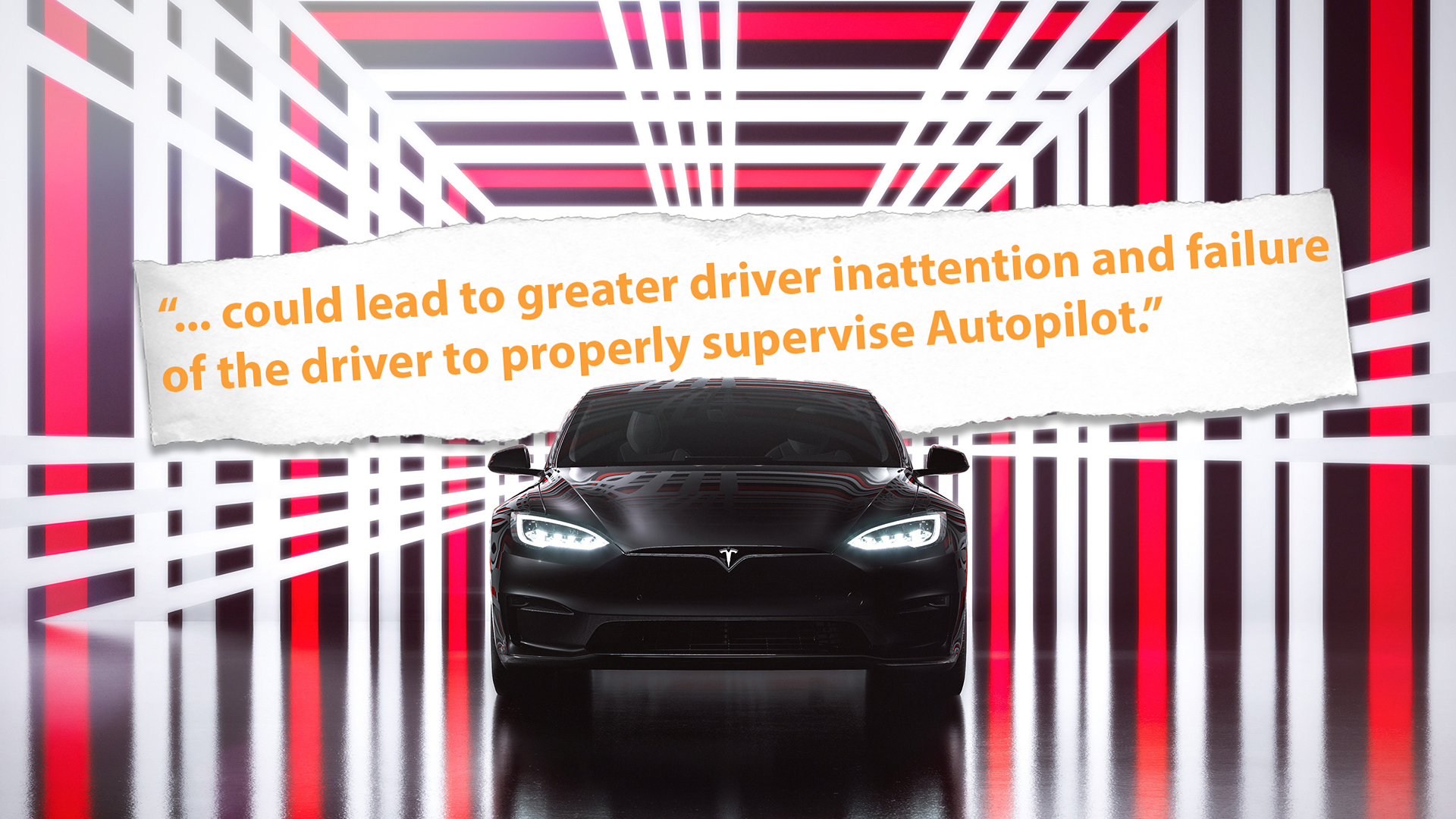

The National Highway Traffic Safety Administration is seeking information from Tesla about a secret Autopilot mode that supposedly makes it easier for vehicle owners to keep their hands off of the steering wheel during semi-autonomous driving.
In a letter penned by the federal agency in July, Tesla was ordered to confirm whether it introduced an option to reduce “steering wheel nag,” which is a driver-monitoring technique used while Tesla’s Autopilot system is engaged.
“Recently, NHTSA became aware that Tesla has introduced an Autopilot configuration that, when enabled, allows drivers using Autopilot to operate their vehicles for extended periods without Autopilot prompting the driver to apply torque to the steering wheel,” wrote NHTSA in a letter to the Texas-based electric automaker. “NHTSA is concerned that this feature was introduced to consumer vehicles and, now that the existence of this feature is known to the public, more drivers may attempt to activate it. The resulting relaxation of controls designed to ensure that the driver remains engaged in the dynamic driving task could lead to greater driver inattention and failure of the driver to properly supervise Autopilot.”
In the special order from the federal agency, NHTSA demanded that Tesla respond to the probe no later than August 25th, which was last week. It’s not clear if Tesla did, in fact, submit a response to NHTSA, nor if all of the data requested was actually included. However, if Tesla failed to respond to the probe, the agency said that the automaker would be subject to fines of up to $26,315 per day.
NHTSA specifically requested dates that the driver monitoring changes were pushed to engineering and then subsequently to consumer cars; the version of the software that included the change; and the number of vehicles affected. It also asked Tesla specifically what steps are needed to activate the feature, and how a vehicle can be reverted to a previous, normal state where driver monitoring is more aggressive.
Steering wheel nag is something that Tesla owners have complained about for some time. It prompts drivers to apply torque to the steering wheel to ensure that the vehicle operator is actually paying attention to the road—something necessary because both Autopilot and its more advanced Full Self-Driving Beta variant are both Level 2 driver-assistance systems which require drivers to pay attention at all times and keep their hands on the wheel.
Tesla CEO Elon Musk is well aware of owner animosity towards the feature. He’s a critic of driver monitoring himself and previously rejected a camera-based monitoring system for Tesla vehicles for being “ineffective,” despite the company now investing resources into utilizing the cabin-facing camera for this very purpose.
In December, Musk agreed that FSD Beta should allow users to turn off the steering wheel nag if they had accumulated so many miles while operating with the ADAS system engaged. He then promised there would be an update in January to address this.
In June, a prominent Tesla hacker named GreenTheOnly discovered the presence of a feature called “Elon Mode.” The feature allowed what Elon Musk promised: reduced (or nag-free) driving with the option enabled. The hacker indicated that they drove nearly 600 miles with no nag in what appeared to have been a vehicle owned by Tesla at one time. They also previously told CNBC that there was no way to know how many vehicles had Elon Mode available to enable “unless you work at Tesla, or otherwise have access to relevant databases at the company.”
Likely, this Elon Mode is what the NHTSA is probing.
Back in 2018, the NHTSA deemed the “Autopilot Buddy,” a physical weight designed to emulate a driver’s hand on the steering wheel, to be unsafe. At the time, then-Deputy Administrator Heidi King said that the product was “unacceptable.”
“By preventing the safety system from warning the driver to return their hands to the wheel, this product disables an important safeguard, and could put customers and other road users at risk,” King said.
Autopilot Buddy accomplished the same goal that Elon Mode supposedly does, in removing the safety warning for drivers to return their hands to the wheel. Ultimately, it’s important to remember that Tesla’s driver assistance suite is still limited to Level 2 functionality, never mind the controversial names the company has given the tech. That means drivers are meant to always be in control of the vehicle and use such features as driving aids—not depend on them to pilot the vehicle without interaction.
Got a tip or question for the author? Contact them directly: rob@thedrive.com
